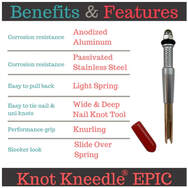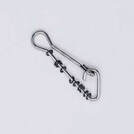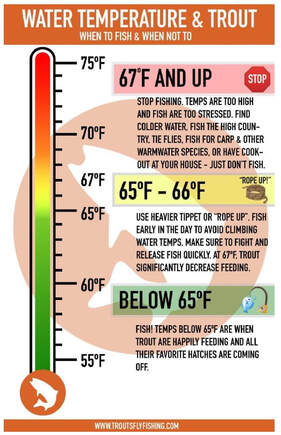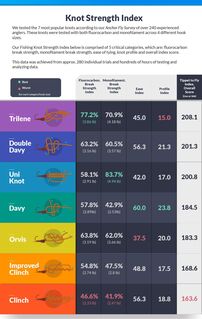Flies
Blue Winged Olive |
Yallerhammer |
Zebra Midge |
Hot Head Euro Nymph |
RS2 EmergerPine Squirrel ZonkerEgan's Red DartPerdi-Worm Euro Nymph |
Bionic AntPat's Rubber LegsBlackburn Tellico NymphSecret Weapon Smoky Mountain Fly Pattern |
Gear & Gadgets
Knot Kneedle
|
Fishpond Sushi Roll
|
|
Karmik Outdoors
|
Aluminum Thermometer
Trout fishing in NC can bring large swings in water temperature are very possible. It may be a good idea to carry an aluminum thermometer along on your next trip. They can be purchased from Mad River Outfitters.
Catch and Release Tool
|
|
Rod Holder
Have you ever needed a third hand on the water? Try a Rod Holder. Click here for the article from Fly Lords Magazine about rod holders.
Tippet Ring
|
Fly Fishing Tips
Five Tips on how to stay warm for winter fishing
Tip 1. Bring a hot coffee or tea in your favorite Yeti Ram-bler! If you’re adventurous pour some whiskey in there too!
Tip 2. Bite the bullet and get battery-operated heat socks, it will change your life!
Tip 3. Some good wool gloves or some fishing-specific ones like the Simms Fishing Half Finger Fishing Gloves.
Tip 4. You can’t go wrong with hand warmers or feet warmers!
Tip 5. Last, a Wym Hoff mindset – the cold is all in your head. Focus on the fish, tight lines and embracing every second you’re out there.
Don't Forget the Mend
Fly fishermen know that mending usually aid in the prevention of a drag. They recommend that one creates a slack line on the upstream to prevent pulling to occur on the fly. Mending should be done when the line is right in front of you. But after the cast just like it can happen as one gets to flip a loop in a particular rope. However, the loop should not run the whole line length in order for it to manage to move the fly effectively. Therefore, that only enough looping should be done to throw slacklines in the upstream director of the fly.
Source: https://bonfirebob.com/secrets-of-fly-fishing/
A Little Motion can go a long way, from Field and Stream
This tip may seem counterintuitive to some, since anglers typically strive for drag-free drifts when fishing dry flies or nymphs. The problem is, fall brings leaves, twigs, and wind-blown junk to the river. This junk clogs not only the surface, but also the many layers of the water column. Giving your fly a little twitch every now and then can grab a fish’s attention and help differentiate it from debris. Slow, short strips can coax big eats, too, and don’t be in a hurry to make a lot of fast casts. Well-placed, methodical casts are the name of the game.
Bonus Tip: Educate yourself on what a spawning bed, or redd, looks like. Targeting spawning fish is a super big no-no.
How to wade Safely
One of the most dangerous activities in fly fishing is wading the the potential of falling. This link will take you to an article by Orvis on how to wade safely. Click here to learn more information on the safety tips.
1) Use a wading staff
2) Always wear a wading belt
3) Pivot upstream
4) If you get tired stop and rest or trace your steps back to safety
Catching Stocked Trout
Kent Klewein, Gink & Gasoline
Tip 1: Big flies and bright flies are generally the best choice for freshly stocked trout
Tip 2: Don't move, change your flies first
Tip 3: Search out the slower moving water like pools and deeper runs
Tip 4: Go natural with fly choice after the trout have been around for a while
Tip 5: Hit the pocket water and riffles
Tip 6: Swing your flies
Tip 7: Go tiny and downsize your tippet
Knots
|





